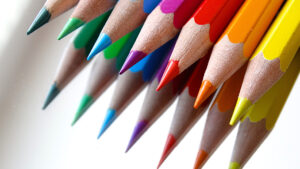Mads Soegaard, Founder at Interaction Design Foundation (IDF) has revealed a hack that will help boost memory just in time for final exams – and almost anyone can do it.
Finals are starting this week at many schools across America, meaning students will be trying their hardest to prepare and ace their exam before the end of the trimester. In Alabama, students will be sitting their final exam from today, through to the end of the month.
Instead of typing up tons of notes and hoping that you’ll take in the vital information when studying, it’s much more effective to write notes by hand using different colored pens to increase your chances of remembering them when you head into your exam.
Mads Soegaard explains: “There’s a common misconception that taking down as much information as you can when studying is the best way to learn, and so many students opt for typing up their notes to write more with less effort and save some time.
“However, it’s much more effective to write down key points by hand using colored pens, highlighters and sticky notes, as color works to boost our memory.
“Writing notes by hand stimulates retention as you’re forcing your brain to process the information in a more detailed way than typing. It also forces you to be more selective about what you’re writing down – it’s about choosing quality over quantity.”
According to a psychological study, writing in color can help us improve memory performance by up to 80%, because 90% of the information transmitted to the brain is visual.
In fact, the brain processes images a whopping 60,000 times faster than text, as the brain sees words as individual images that we must first recognize before understanding. Luckily, there’s an easy way you can make written words easier to process quickly.
Mads continues: “Using colored pens when writing keynotes allows us to see words as visual information rather than a block of text, which means we’re more likely to understand what we’re reading and can take in the information much faster than we could otherwise.
“As well as boosting our memory, color also helps to form associations between notes, as when you recall a fact linked to one shade, your brain will naturally start thinking of the other facts that share the same shade.
“You can also use this association to your advantage when it comes to actually sitting your exam. By bringing something that’s the same color as your notes into the exam with you – such as a bracelet or pen – you’ll trigger your brain to remember facts in the same shade.”
This is due to context-dependent memory, where recall improves because you have similar context cues around you as when you first took in the information.
[Mads Soegaard] explains that some colors are more effective than others: “Colors invoke different reactions, and so it’s vital to choose attention-grabbing shades associated with importance – particularly warm shades like red, orange and yellow.
“Picking contrasting colors can also help make information stand out more, so you may want to incorporate different sticky notes or highlighters for important points. However, make sure not to overload your notes, as making facts more distinctive is key. ”
And incorporating color isn’t the only way to use visual learning to your advantage, the experts at Interaction Design Foundation (IDF) reveal, as you can also boost memory by:
- Using diagrams to link information. If you find yourself zoning out when faced with a wall of text, you may want to write notes as a diagram like a spidergram, flowchart or table. This helps separate the information into a more digestible format and makes it easier to color-coordinate critical points without color overload.
- Making sure your room is well-lit. As studying in the evening after school or work is typical, you’re likely writing notes without proper daylight. Just as color can be a strong context cue, so can light, so make sure you’re learning in as close to test conditions as you can – meaning in a well-lit room without any other visual distractions (like TV or your phone) that will pull your attention.
- Taking a break every half hour. It’s easy to fall into the trap of spending hours on end sitting and writing notes, but doing so actually reduces the odds of you retaining information. You lose 85% of your input after reading for 25 minutes as it’s visually repetitive, so it’s essential to take frequent breaks to recharge and reset.
According to Mads Soegaard, some will benefit more from these tips than others, as he says: “If you’re someone with a preference for seeing and observing things in your day-to-day life – including pictures and written directions – you’re a visual learner, and you’ll struggle to retain information that’s just written down with no visual elements to trigger the memory.
“Incorporating visual elements like colors, diagrams and images into your day-to-day note-taking can help in a range of situations, not just studying – so try it out if you’re somebody who often struggles to remember important dates or personal details.
“Of course, some people do better with visual memory prompts than others, as not everybody is a visual learner. It’s important to leave yourself plenty of time to study before an exam so that you can figure out a strategy that works for you.”
For more information, visit interaction-design.org.





